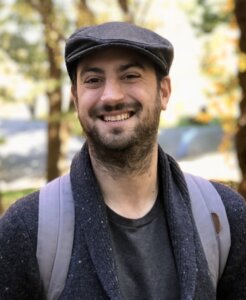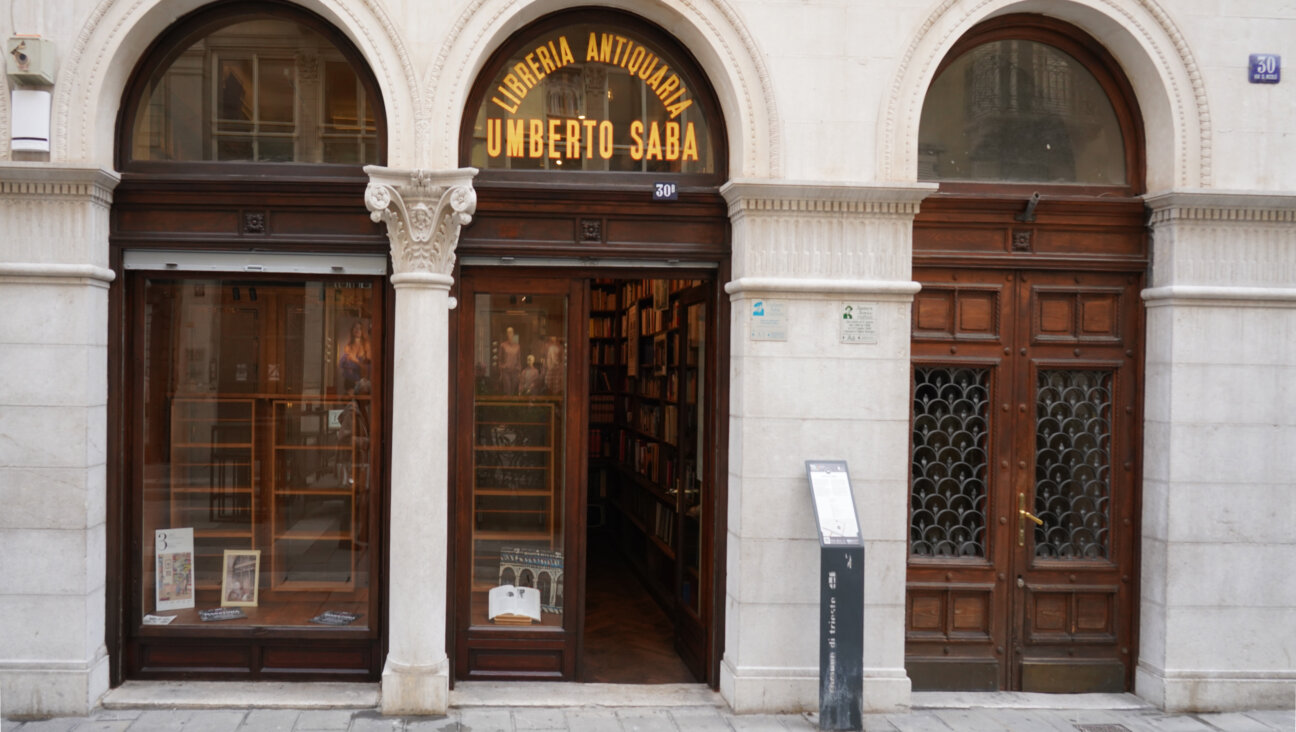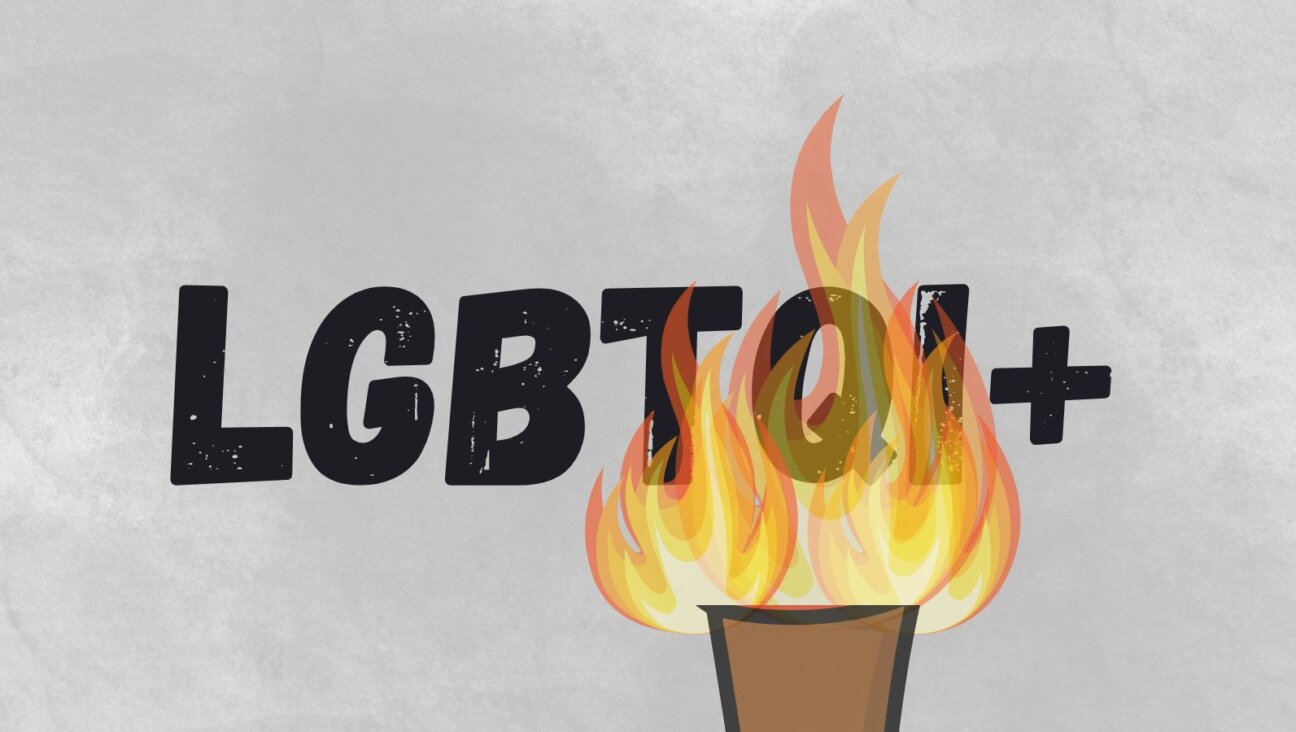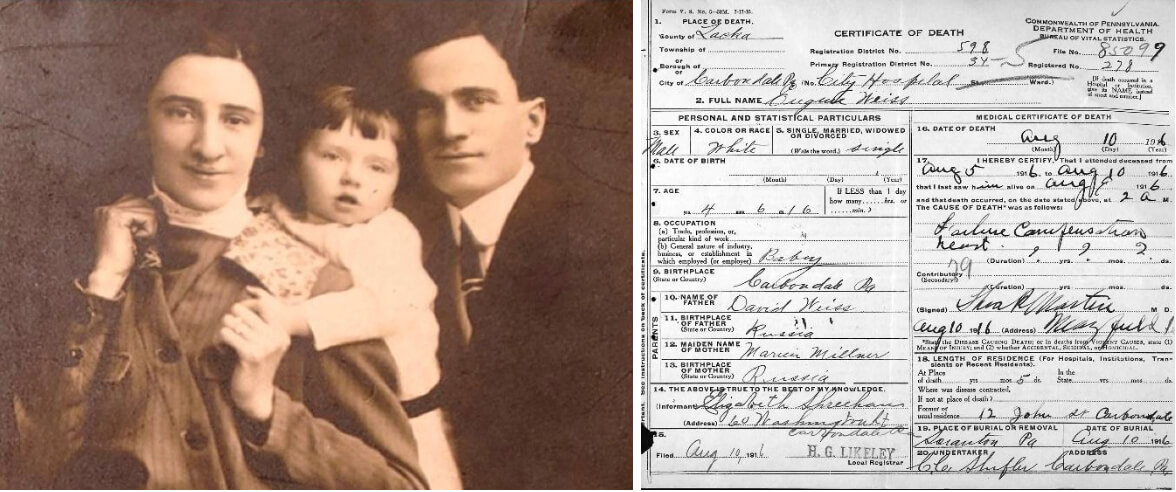In New York, migrants crowd into hotels seeking shelter — just like Jewish refugees did after WWII
At the Roosevelt, the Park West and the Belnord, echoes of Holocaust survivors’ stories
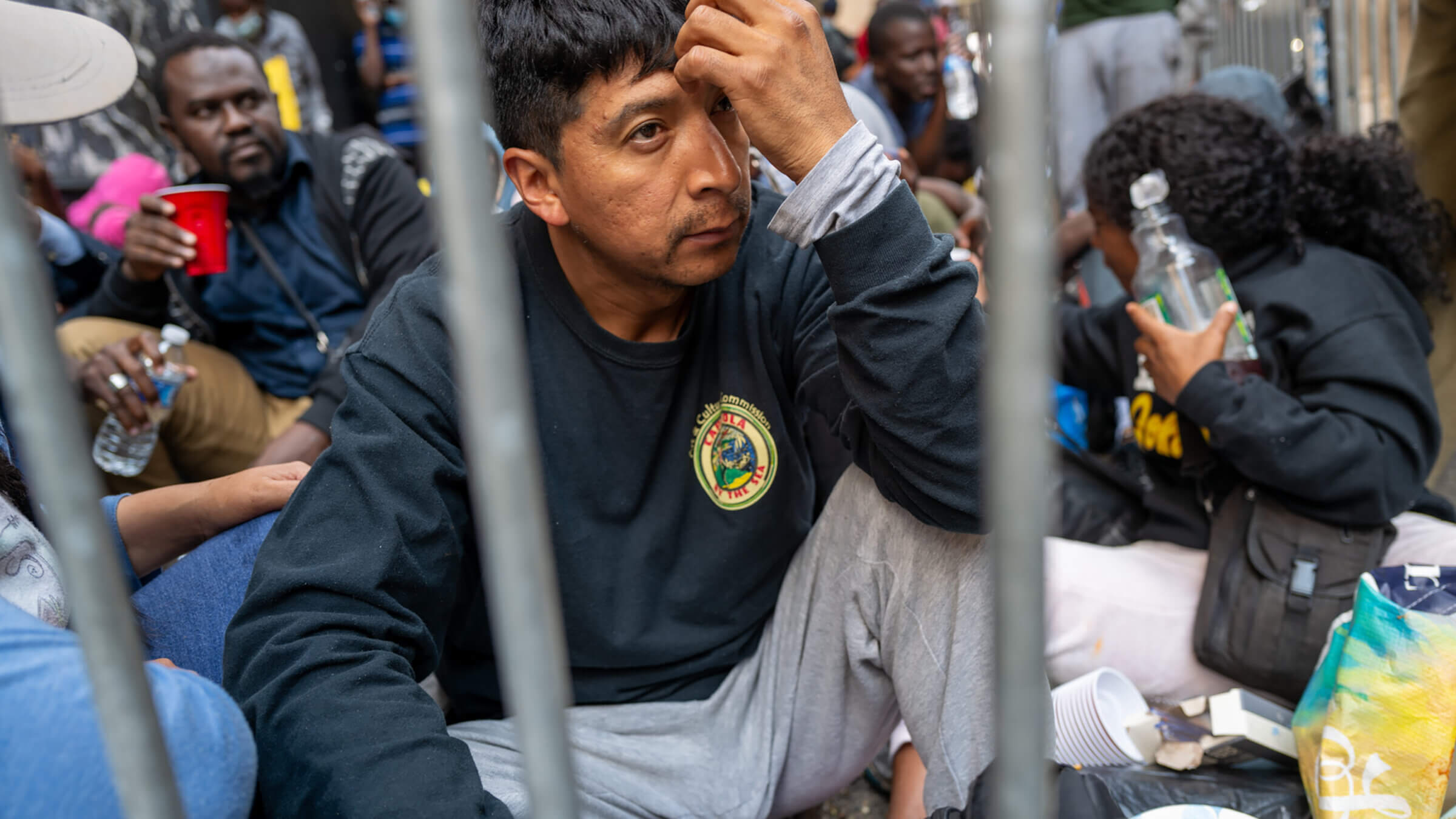
Recently arrived migrants to New York City camp outside of the Roosevelt Hotel. Photo by Getty Images
When the Hotel Marseilles opened on Manhattan’s Upper West Side in 1905, its brochure promised “first-class accommodations” and “home-like refinement.” Sara Delano Roosevelt (the president’s mother) made the hotel her permanent home. So did the writer Dorothy Parker. But by World War II, the 11-story Beaux Arts building on 103rd Street and Broadway had fallen into disrepair, and its ample suites were subdivided.
After the war, the 275-room hotel became crowded with families of Holocaust refugees; its lavish lounges converted into medical facilities and classrooms. “The hotel lobby is heaped with bags from several European countries whenever a displaced persons ship arrives,” a New York Times article said in 1949. The once-elegant dining room served as a free cafeteria for the newest immigrants, hungering for freedom.
Seven decades later, similar scenes are playing out across New York. Since April 2022, over 90,000 asylum seekers have arrived in New York City. The largest share are Venezuelan refugees, but families have come from across South and Central America and other regions. After crossing the U.S. southern border, they pressed on to New York on their own or were bussed up by Greg Abbott, the Republican governor of Texas, making the city the nation’s largest migrant destination.
Currently, almost 50,000 migrants in New York are in temporary housing. Strained to keep up with the influx, Mayor Eric Adams has placed migrants in city shelters, tents, a Brooklyn cruise terminal, office buildings, and over 100 hotels.
The largest hotels turned shelters are in midtown, but on the Upper West Side, the Park West Hotel, the Belnord Hotel, and the Riverside Terrace Residence are housing migrants within blocks of the several hotels where European Jewish refugees first rested their heads after years in ghettos, concentration camps, and displaced persons (DP) camps.
‘Their first key to a private room’
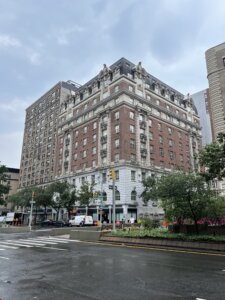
From 1946 to 1953, the United States accepted 144,000 Holocaust refugees. The majority of survivors and their children landed in New York. Some had friends or family waiting at the docks; others were alone with nowhere to go.
The Hebrew Immigrant Aid Society (HIAS) opened its headquarters in the former Astor Library on Lafayette Street (now the Public Theater) to 400 refugees. Jewish rescue groups housed more in Upper West Side hotels like the Capitol Hall, the Whitehall, and the Midway; the largest of these was the Hotel Marseilles operated by the United Service for New Americans (USNA).
For some, it became a “‘dilapidated halfway house for war refugees,’ where they nonetheless felt at ease,” the sociologist William B. Helmreich wrote of the Hotel Marseilles in his 1992 book Against All Odds about Holocaust survivors’ lives in the US. “Others identified it as the place they received their first ever key to a private room.”
“People passing by the Hotel Marseilles almost always stop to wonder,” Edwin Rosenberg, the president of USNA, wrote in the Jewish News of Northern California in 1948. “So many baby carriages going in and out of the hotel’s rolling doors.”
Today, Upper West Siders may have the same thoughts about the foreign language speaking mothers pushing strollers a few blocks away at the Park West Hotel on Central Park West and 106th Street. Cecilia Castellanos, 32, a Peruvian asylum seeker, her husband, and three children, ages 5, 9 and 12, have been squeezed into a single hotel room at Park West for the past eight months. Without a kitchen, she was returning on a recent afternoon with take-out containers of rice and beans for her family. Migrants are given three meals a day, but many complain that the processed food is not nutritious or just plain bad.
‘They intercepted us and pointed guns at us’
Like the Hotel Marseilles, the Park West, a Beaux Arts Hotel, originally opened as a “Hotel Apartment,” which catered to both vacationers and permanent residents. First called La Scala when it opened in 1900, it once advertised “High-Class Furnished Apartments.” Decades later, it became a single-room-occupancy building with rooms that a New York City Housing Preservation and Development department spokesperson described in 1997 as “dingy airless cubicles.” Since then, it has been converted into a budget hotel previously called Astor on the Park and housed homeless women during the pandemic.
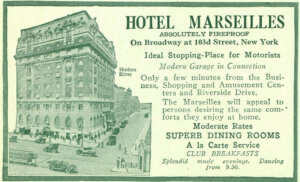
In Lima, Cecilia Castellanos owned a convenience store that served fast food. She says she was being extorted by gangs. “I filed a complaint with the police,” she told me in Spanish. The complaint didn’t help, though. The final straw came at the end of 2022, when armed men chased the family in broad daylight. “They intercepted us and pointed guns at us,” she said.
The family fled, flying to Mexico City, and a few days later, crossed the border into Arizona. From there, they came to New York, where Castellanos has an aunt. According to a June report by the immigrant advocacy group Make the Road New York, over 80% of adult migrants are under 40, and the majority of them travel with children.
Like many migrants, Castellanos is unable to afford a lawyer to file for asylum and request working papers. She has been limited to sporadic work, cooking at an Ecuadorian restaurant on Roosevelt Avenue in Queens, and her husband has done some off-the-books construction work. The little money they have made is not enough to contemplate an apartment in a city where the median rent is over $3,700 a month, according to the real estate website Zillow.
Her children, Castellanos said, have adjusted well and are attending a local school. “In Lima,” she said, “they lived in fear.”
‘We’re not living here. We’re getting out.’
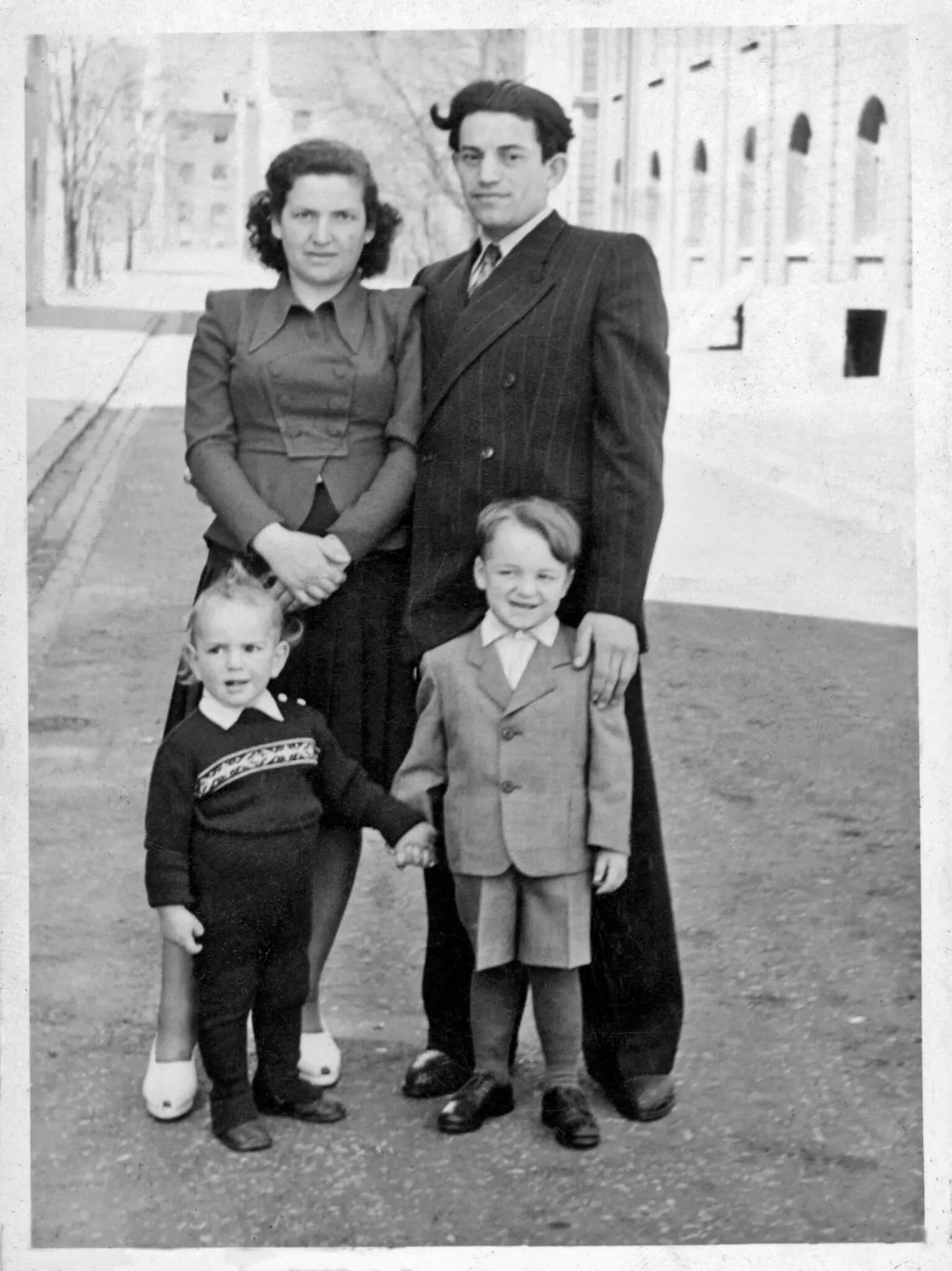
On Purim Day 1950, 5-year-old Joseph Berger arrived with his family at the Capitol Hall hotel on West 87th Street. They stayed about two months. “My mother fell in love with Manhattan,” Berger, a retired New York Times journalist and author of the 2002 memoir and family history Displaced Persons, told me in a recent phone interview. “New York became our home.”
Berger’s parents, Rachel Golant and Marcus Berger, were Polish Jews who fled into the Soviet Union after the Nazi invasion of Poland in 1939. They met and married in 1943 in the city of Lysva, where they had been sent by Soviet authorities. Marcus was conscripted into a Red Army boot factory, and the couple survived on meager rations. Joseph was born in Lysva in January 1945, before the war’s end.
“They went back to Poland [in 1946]. And they found out that nobody was left,” Berger said. In July 1946, at least 42 Jews were killed in a pogrom in the Polish city of Kielce, raising fears among Jews. “My father said, ‘We’re not living here. We’re getting out.’”
The Berger family sold all their possessions to pay smugglers to stow them in trucks heading into into the U.S.-controlled sector of Germany, where they joined the 250,000 Jews who were housed, fed, and protected by American and British soldiers in DP camps under the United Nations Rehabilitation and Relief Agency. Joseph’s younger brother Josh, now a retired dermatologist, was born in a DP camp on the outskirts of Berlin in 1947.
Many members of the U.S. military harbored antisemitic views and resented the costly and prolonged mission to operate DP camps. This led to deplorable conditions, which were blamed on the Jewish refugees themselves. “These Jewish DPs, or at least a majority of them,” General George S. Patton wrote in his diary in 1945, “have no sense of human relationships. They decline, where practicable, to use latrines, preferring to relieve themselves on the floor.”
According to David Nasaw’s 2020 book The Last Million about postwar European refugees, the U.S. military official policy after the war was that Jewish refugees should be repatriated to their countries of origin, the same places where their families were killed. In 1946, President Harry S. Truman pushed for Congress to allow in more Jewish and other European refugees. Despite widespread knowledge of the Nazi atrocities, 72% of Americans polled by Gallup at the time opposed the legislation. Conservative groups, like the American Legion, spoke out against immigration law changes that would allow in a large number of Jews and change the “racial composition” of the country.
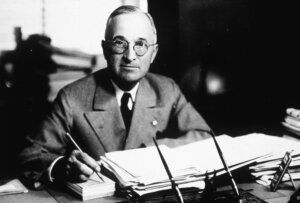
“The opponents of DP legislation,“ Nasaw wrote, “trading in time-worn Judeo-Bolshevik conspiracy theories, suggested that those who had lived in the Soviet Union or Soviet-dominated Poland and been liberated by the Red Army were more than likely to be Communist sympathizers or clandestine operatives.”
The DP Act that passed in 1948 placated these Cold War fears, leaving out the vast number of Polish Jews like the Bergers. Only after the act was expanded two years later could they receive their U.S. visas.
“My family was frightened refugees,” Berger, 78, said. “They had no money and no relatives except my mother’s uncle here.”
Berger remembers his parents scrubbing down the Capitol Hall hotel room immediately upon their arrival. “Our room was seedy, dusty, Victorian, with a large mahogany headboard and wardrobe that heightened the room’s dark, oppressive feeling,” he wrote in his memoir. “A greasy armchair, a small enamel-topped table, a corner sink, and two fold-up cots for my brother, Josh, and me made the room feel cheap as well.”
Their stay ended when the hotel’s contract to house refugees expired. “My father got into an actual physical fight with the people who were trying to throw us out,” said Berger.
“It was great to see my father fight back,” Berger added. “To see him take on the authority after all the years of having suffered himself.”
HIAS quickly intervened and found the family a room with a Jewish widow in the South Bronx — a common arrangement given that the city, like now, was in a housing crisis. After three months, they moved into their own tenement apartment on West 102nd Street in Manhattan. A German Jewish refugee helped Marcus Berger find a job making ironing board covers in a Newark factory, where he’d work for 25 years, eventually becoming a foreman.

‘A man-made humanitarian crisis’
According to Helmreich’s sociological study, Holocaust survivors in the U.S., on average, reached higher incomes than their American Jewish counterparts. Jewish organizations offered English and vocational classes to the new arrivals, but most survivors started at menial jobs, often in the garment industry, and worked their way up.
Today, the labor outlook for migrants is bleaker. Asylum seekers can apply for employment authorization 150 days after filing asylum applications, but without access to lawyers, many have not filed the applications. Others like Milton Castiblanco, 52, from Colombia’s department of Huila, a coffee-growing region, do not have the necessary documents or identification to apply for political asylum. “Unfortunately, In El Paso, Texas, ICE took away all of my documents,“ said Castiblanco who fled Colombia last year after being assaulted and threatened because of his anti-corruption activism.
According to the Make The Road New York report, only 3% of migrants in New York have working papers. The rest must look for work off-the-books. Migrant mothers with young children in tow sell candy in the subway or sliced fruit in the parks; many men make deliveries for food ordering apps. The street behind the 1045-room Roosevelt Hotel in midtown Manhattan has become a parking lot for the mopeds of the deliveristas.
The Roosevelt, a grand hotel behind Grand Central Terminal, which opened in 1924, is used as the city’s intake center. On a recent morning, the front door was crowded with newly arrived single men. Exhausted from overnight bus trips, the mostly Latin American men were hoping for beds. Next door, office workers in pressed collared shirts stood in line at the sleek Black Fox Coffee Co. where the $6 lattes are made with coffee beans from Huila, the same part of Colombia that Milton Castiblanco fled from.
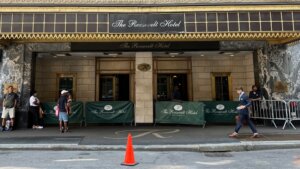
Rosa Vargas, 25, a Venezuelan refugee, was leaving the hotel to take her 2-year-old daughter and 5-year-old son to visit “las pantallas,” or, in English, the screens, which is how she refers to nearby Times Square. Her partner was out making deliveries for Uber Eats.
Vargas and her family have been living in a room in the Roosevelt Hotel for two months, but she wants to find an apartment as soon as possible. “I don’t like living so close to so many people,” she said. But her real goal is to return to Venezuela. “I don’t want to spend a lot of time here,” she added.
Vargas, however, said her dream of buying a house and raising her children in Venezuela isn’t possible under current President Nicolás Maduro, whose administration is under U.S. sanctions for what the State Department describes as “extensive corruption, economic mismanagement, and violation of international norms,” which has led to a “man-made humanitarian crisis.”
As is the case for many Venezuelans, Vargas’ life as a refugee began years ago and has spanned several countries. She was 17 when she and her former partner left their city, Maracaibo, in 2015, for the Guajira region of Colombia. “There wasn’t enough food and there were power outages. I had a small baby,” Vargas said.
In her new country, conditions were better and Vargas had her second child. During the pandemic, life became more dangerous and difficult for the 2.5 million Venezuelan refugees in Colombia.
“They paid us very little and we didn’t have enough money for food,” Vargas said. “Because we were undocumented immigrants, we suffered a lot of xenophobia.” Finally, after breaking up with her partner, she left Colombia, leaving her oldest child with her mother. “In the middle of the pandemic, I left for Ecuador pregnant, just me and my son,” she said. “I walked for a month.”
In Ecuador, Vargas found work cooking in restaurants and met a Venezuelan man, but since 2021, the country has suffered from a surge in gang activity and high inflation. Again, being undocumented left Vargas more vulnerable. “We were scared and we didn’t have enough money to get by,” Vargas said. Her partner decided they should go to the United States. “We didn’t know what the trip had in store for us.”
The journey with her 2-year-old and 5-year-old children took two months. She still finds it difficult to talk about crossing the dangerous Darién Gap, an undeveloped and lawless region between Panama and Colombia, where the family passed cadavers. Hired guides said the crossing would take two days, but it took four. “It was difficult going down cliffs with two young children. I felt like I couldn’t go on,” she said. “We ran out of food, and we saw many things, but we made it out.”
The family was robbed in Nicaragua and forced to bribe the police in Guatemala with their last dollars. “In Mexico, we had no money and nothing to eat,” Vargas recounted. “We had to sell lollipops, candy, cookies, anything we could sell in the street to keep going,” she said. “Mexicans helped us so much.”
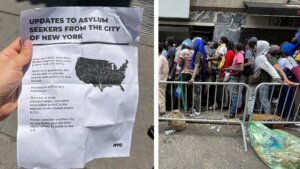
Like thousands of others, the family crossed northern Mexico by hitching rides on freight trains, reaching Ciudad Juárez, one of the world’s most dangerous cities and many migrants’ last stop before the United States. Turned away at an official border crossing, they entered illegally, carrying the children over the border wall and running from border patrol, only to then be arrested. “A gringa saw us in front of her house and called the police,” Vargas said. She and her two children were first sent to Denver, before coming to New York, where her partner joined them several weeks later at the Roosevelt Hotel.
“The hotel is beautiful,” she told me. In the lobby, migrant families sit and socialize on the sofas, while social workers and organizations offer help. “Haitians, Chinese, Venezuelans, Colombians, Ecuadoreans, Peruvians, Dominicans, and people from everywhere,” Vargas said, share the facilities without conflicts or problems.
But intake workers were not so welcoming. On the day I visited, they were handing out flyers stating that the city, overwhelmed with migrants, can no longer guarantee shelter to single men, despite a local right-to-shelter law. The same flyers are being distributed at the border urging migrants to go to states other than New York. More recently, dozens of African and Latin American men were camped outside the Roosevelt Hotel waiting for shelter spots.
‘I really feel for them in terms of their agony’

Dora Hershman, 76, has no memories of the Hotel Marseilles, but a photo of her as baby arriving in the lobby appeared in the Forward in April 1948. Her grandmother and three aunts, Polish Jews, were outside the hotel when they spotted her mother Dina Wizenfeld who they assumed was killed. The last they had seen Dina was when she was taken away in Auschwitz in 1944.
Hershman was born in Paris in 1946, at the time her grandmother and aunts were in a DP camp in Germany. The Hotel Marseilles reunion was the first time Hershman’s grandmother learned of her 18-month-old granddaughter.
“They didn’t last long on the Upper West Side, ” said Hershman, now herself a grandmother of nine. The family moved first to Brooklyn, then shortly after to a farm in Plainfield, Connecticut.
“I really feel for them in terms of their agony,” Hershman said of today’s migrants in a phone interview from her home in New Rochelle, New York. She worries that the city can’t absorb so many migrants, but she empathizes with the challenges the migrant families are facing. “I know how hard it was for my parents,” she said. “I, as the oldest, knew what it meant not to have any money, not to have food.”
‘This is how America looks’
Jewish refugees, upon arriving in the lobby of the Hotel Marseilles, saw a large map of the United States, alongside photos of American cities. A sign above read “This is How America Looks” in English, Yiddish and German.
In the summer of 1948, Ben Stonehill, an amateur Jewish folklorist, recorded over a thousand songs from Holocaust survivors in the Hotel Marseilles. The sounds of the busy lobby seep into the recording. “There’s babies crying, there’s women giggling, there’s people helping each other out, sometimes joining in song,” Miriam Isaacs, a sociolinguist, told NPR in 2015.
Isaacs, then a fellow at the U.S. Holocaust Memorial Museum, studied and categorized the mostly Yiddish recordings, finding hymns of resistance from the ghettos, and work songs from the concentration camps, along with music from prewar Yiddish-speaking Europe: lullabies, ballads and love songs.
One of the songs in the Stonehill collection is sung by Masha Leon, who later became a longtime Forward columnist. Leon, who passed away in 2017 at the age of 86, sang “Tuk Tuk Tuk,” a children’s Yiddish song. It was a song she knew as a child in Warsaw, before her family escaped at the start of the war.
Leon didn’t live in the Hotel Marseilles, but frequently hung out there as a 17-year-old in 1948. “The lobby looked like a European Railway waiting room seen in post-WWII black/white films,” Leon recounted years later in a text republished in a 2015 Forward article. “Families sitting on suitcases, men in ill-fitting coats, Polish, Yiddish, German spoken. Older people looking shell-shocked, young people — survivors of Auschwitz, Bergen Belsen, etc.”
“I’d come to the Marseilles to meet guys,” she wrote. “They were vital, good-looking teenagers, young men and women in their 20s on the move who laughed, joked, flirted.”
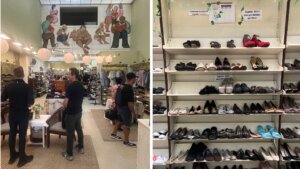
‘It’s pursuing Jewish values’
At the Hotel Marseilles, aside from classrooms, medical facilities, and a kosher kitchen, there was a center with free clothing supplied at cost or at high discounts by garment manufacturers. “The change as torn, shabby, garments are replaced by new American clothes is a transformation in morale as well as appearance,” wrote Edwin Rosenberg, the president of the USNA, in 1948.
For migrants today, there is the “The Little Shop of Kindness,” a donation-based shop with free clothes and food for migrants next to Bryant Park in midtown Manhattan. On a recent morning, a volunteer helped a Venezuelan family pick through children’s clothes, the daughter trying on shoes Goldilocks-style. At a table in the front area, migrants asked volunteer lawyers for legal advice. Nearby, adults chatted over free coffee and sandwiches, and toddlers played in a colorful matted area.
The shop is run by the volunteer organization Team TLC NYC, and is housed in a former Seventh Day Adventist book store, which the church group has loaned for the project. Most of the migrants who come to the store have been in the city for only two or three days and are in need of clothing and food.
Ben Rawls, 15, and his sister Lily Rawls, 14, of Washington Heights were volunteering with other teens as part of a summer program from the Jewish service organization Repair The World. They were motivated to help asylum seekers, in part, because their own family members were in the Holocaust.
“It’s pursuing Jewish values,” Lily said. “Justice in some ways, kindness, helping people, and doing a good deed.” Their mother, the Holocaust historian Ruth Jolanda Weinberger, had told them about the Jewish refugees in the New York hotels after the war. Mostly, though, they found the work rewarding in itself. ”You can see that they’re really grateful to get new clothes and other items, that they can start their new lives,” said Ben.
‘It gives me hope’
The bulk of the aid to migrants comes not from volunteers but from the city of New York. The mayor’s office, anticipating a larger influx of migrants, has estimated that in 2024, the total cost of housing and feeding asylum seekers will exceed $4 billion — money that Mayor Adams says the city does not have.
“We need help from the federal government,” the mayor said in a July 19 press conference.
New York politicians have pressed the Biden administration to increase aid to the city and fast-track work permits. The White House has sidestepped the criticism, responding that Congress must “reform and modernize our decades-old immigration laws.” An unlikely outcome, given that Republicans in Congress in May advanced the “Secure the Border Act.” The bill, which has not passed the Senate, aimed not to aid refugees but add border security and require some asylum seekers to wait in Mexico during immigration proceedings.

Before the vote, Republican House Majority Leader Kevin McCarthy asserted that the bill would “stop the flood of fentanyl into our country, solve the Biden Border Crisis, and support our border patrol agents so they can continue to keep us safe.”
Former President Trump has compared the surge of migrants to an invading army, rhetoric that echoes the warnings that Holocaust refugees, like the families of Joseph Berger and Dora Hershman, would be a communist Trojan horse.
“I look at the record of the Jewish DPs who came over who I personally know,” Berger told me. “The kids became doctors, lawyers, and writers. They made important contributions to society.”
Berger believes that given the opportunity, today’s migrant families could also be a positive force. “People who take such risks to come here should be welcomed,” he said. “They are people who are looking to build a better life for themselves and their children. They work very hard and contribute enormously to the life we have here.”
None of the migrants I spoke to were aware of the Jewish families who were also once refugees starting new lives in Manhattan hotels, but they found comfort in learning that they were not the first.
“It gives me hope,” Castellanos, the Peruvian mother of three, told me, “that my family and I will be able to be in a better place in life.”
